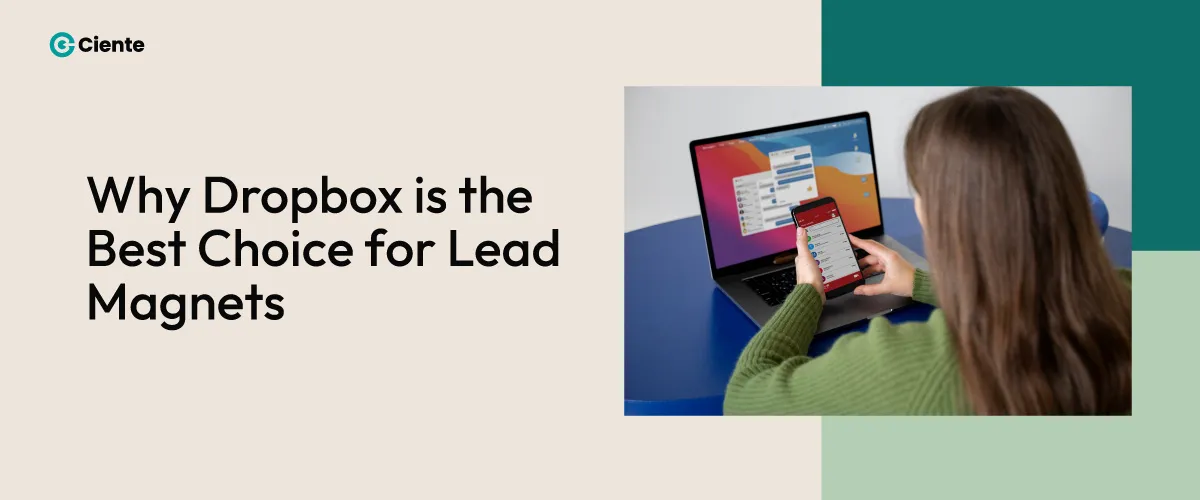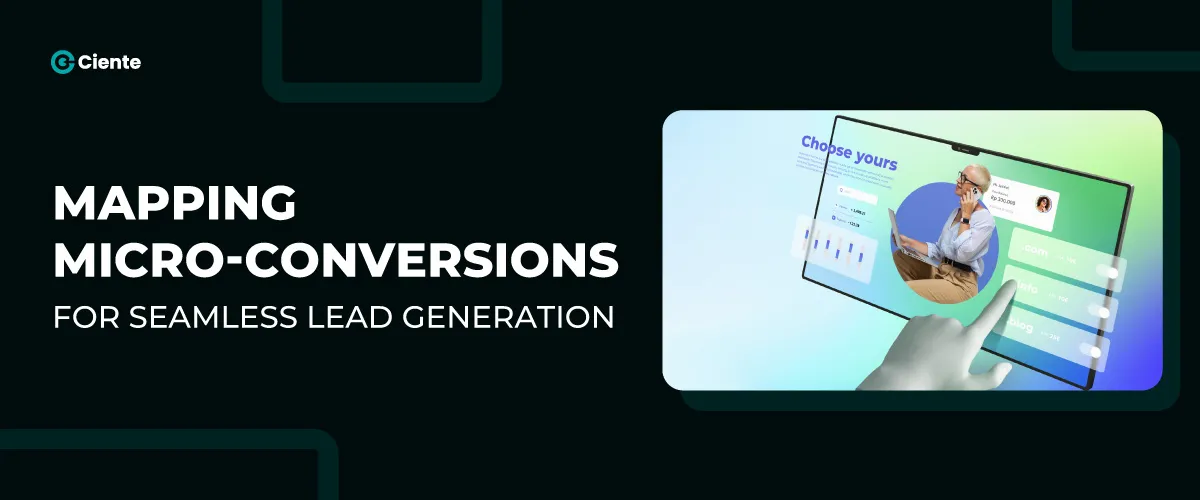Why Dropbox is the Best Choice for Lead Magnets
Since lead magnets help draw more customers to a brand, they must be created and stored in a reliable source. How can Dropbox safeguard such an asset?
Expanding businesses require a continuous back-and-forth of sales and marketing practices that are updated from time to time. But with all this growth comes the responsibility of managing more data. And then, there is the dilemma of where to store them. The same concern applies to lead magnets.
A lead magnet is a valuable resource offered to potential customers in exchange for their contact information. Typically, it is a holistic solution to a challenge. You can offer it at a lower cost or as a downloadable to understand how it sparks interest in your brand. A lead magnet must also be valuable, and brands can charge for it. The idea is to make the lead magnet appealing enough to compel people to make purchase decisions.
And there is one way to determine if your lead magnet is good enough- If it can derive more engaged customers!
With a value-driven magnet in place, this is how a lead gen framework pans out :
It begins with creating a magnet to garner more leads for a brand. A form is then created, followed by setting emails to share lead magnet details with anyone searching for them. The form can be available on the website so prospects can fill in the essential information and request lead magnets. After people start filling it out, the email marketing system receives a notification of the contact details of these prospects. You can also automate thank-you emails to these contacts with the lead magnet.
For storing and sharing these lead magnets, Dropbox proves to be an excellent platform. It is, by far, the most reliable source on cloud platforms, making lead magnets easily accessible.
Let’s explore this in more detail.
Setting your Dropbox for Lead Magnets
Dropbox plays an important role in B2B lead generation by offering a platform to store, organize, and share lead magnets. It is a secure and accessible space to organize valuable content and distribute it among the target audience. Brands can use Dropbox to upload files, share, and use links.
Incorporating Dropbox for managing lead magnets helps you benefit from the following
Centralized Storage
One of the outstanding features of Dropbox is it allows you to keep all lead magnet files in one central location. This simplifies the process of management and access whenever needed.
Smooth Collaboration
With Dropbox, you can experience seamless collaboration with team members or customers. It also lets you share files and folders, allowing multiple people to work on the lead magnet.
User-Friendly Interface
The interface is easy to navigate and systemize your files. Dropbox makes it easy to create folders, categorize lead magnets, and search relevant content.
Secure Sharing
Dropbox offers reliable security features to protect lead magnets. With this, brands can control people who access files, set passwords, and fix the validity period of shared links.
Diving into the basics of Dropbox and its role in lead generation establishes the foundation for effectively utilizing this platform for your lead magnets. Setting up your account is the first step towards harnessing its power for your lead magnets.
Create High-Value Lead Magnets with Dropbox
Dropbox offers a versatile platform that allows you to create various lead magnets. Here are some popular lead magnet formats you can create using Dropbox:
eBooks or Guides
Brands can launch informative content providing valuable insights, best practices, and strategies through ebooks or comprehensive guides.
Ready-to-use templates
Create templates or worksheets to help solve a specific pain point or allow customers to execute complex tasks in a simpler manner.
Checklists
Build a compiled collection of checklists or cheat sheets that outline a step-by-step guide to map the route for achieving a desired outcome.
Webinars
Uploading informative webinars or tutorials to educate the target audience on relevant topics or provide solutions to specific pain points.
Whitepapers
Another form of content is crafting in-depth whitepapers or case studies that provide valuable insights and illustrate expertise and industry insights.
Resource Libraries
Assimilate all valuable resources like articles, podcasts, tutorials, or tools that help the audience learn more about your brand and understand the way to solve specific pain points.
Steps to Make your Lead Magnet influential
Identify Your Target Audience
Before crafting the skeleton for the lead magnet strategy, narrow down the target audience and what pain points you want to address. This approach will allow the development of content that resonates with the pain points.
Select a Format
Figure out which format works best for your brand and the value you can deliver effectively.
Create Compelling Content
Attracting the right audience requires high-quality content offering valuable insights, practical tips, or actionable steps. Brands must organize content with substance that aligns with audience interests and pain points.
Design
The lead magnet must be visually appealing. You can enhance this by adding professional design elements, clear formatting, and engaging visuals.
Save Your Lead Magnet on Dropbox
Once you have a lead magnet in place, save it on the Dropbox account. Build a dedicated folder to organize all lead magnets in one place.
Tracking the performance- a step you must not skip
Measuring the efficacy of your lead magnet and optimizing the lead generation strategy requires keeping tabs on the performance. Dropbox has features that help you monitor and collect insights on the access and application of your lead magnet. Brands can visualize the access stats, where they check the views, downloads, and interactions with lead magnets.
You can also use link analytics, where you share links for lead magnets and access these to understand how these links perform. These links can comprise data such as the number of clicks, geographic location, and sources. Another way to go about this is to integrate analytics tools. Dropbox supports seamless integration with applications like Google Analytics to offer in-depth insights into lead magnet performance. Brands must leverage these to understand the outcomes of lead gen efforts.
Monitoring the performance of lead magnets on Dropbox allows data-driven decisions and fine-tuned strategies for better outcomes.
3 Best practices for Effective Dropbox management
Following this step-wise approach will pave the way for successful data management with Dropbox.
Organize Your Dropbox
Keeping the Dropbox organized works well in a couple of ways. Firstly, it lets you access files in a jiffy. You can save time spent on sorting through different fodders for lead magnets. It is much easier to dedicate a folder to all the lead magnets.
Clearly label the files and folders with names that indicate their content. Consistent naming conventions simplify the search for and management of lead magnets.
Consistent naming conventions make it easier to locate and manage your lead magnets. Creating subfolders is another way of introducing a system. It is also a good idea to remove lead magnets that have become outdated or are not relevant. Eliminating these allows Dropbox to be clutter-free and organized with the latest resources.
Safeguard the Files
Adding a two-factor authentication (2FA) will ask for a verification code in addition to your password when logging in, thus giving an extra layer of security. You can also choose to restrict access permissions to individuals you trust. The other team members can receive view-only access. Brands that share lead magnets through links can opt for password protection.
All this aside, you need to update the Dropbox password regularly. A strong and unique password helps maintain account security.
Optimize Your Lead Magnet for Best Results
Making lead magnets visually appealing helps to attract the target audience. Create compelling headlines and descriptions that communicate the value and benefits of the lead magnet. To make it visually appealing, use high-quality images, engaging graphics, and a layout that is easy to look through. Before zeroing in on the best format, experiment to understand what resonates best with the audience. Once the format is selected, keep track of the performance and tweak as needed to encourage high engagement. The periodic monitoring helps understand whether they are relevant to the audience. Incorporate new insights or trends as and when required to keep the lead magnets enticing. Drive better conversions with Ciente—ranked among the top lead generation companies in the USA for creating high-impact, audience-ready leads.
Summing up
Lead magnets are an efficient way of casting the net over a wide audience. It gives a trailer of your brand expertise, which increases the chances of garnering more audience. When it comes to using Dropbox for your lead magnets, there are both sides to the coin. Whether you are new to Dropbox or looking to optimize lead gen strategies, it is crucial to understand the role of this platform.
Although there are several types of lead magnets, what you implement will depend on the target audience, industry domain, and the value you bring to the table.






